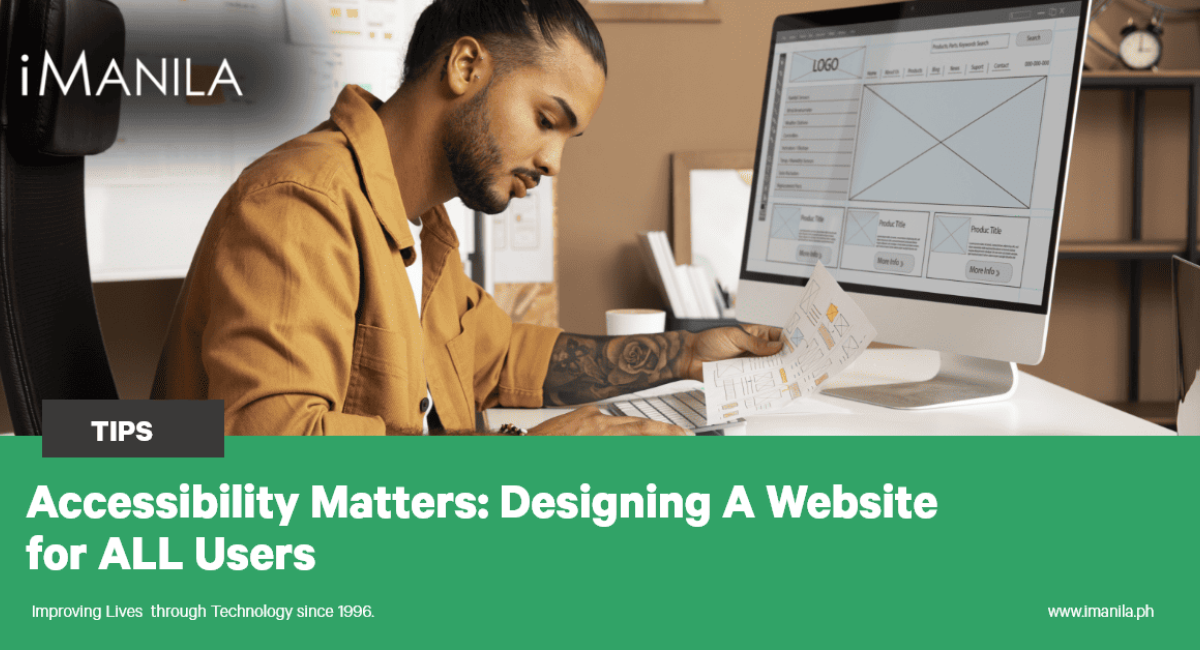In an increasingly digital world, the Internet is a gateway to information, services, and opportunities. But what if this gateway is difficult to access for millions of people? Sadly, this is the reality for many individuals with disabilities who struggle to navigate websites not designed with accessibility in mind. The importance of creating an accessible website cannot be overstated. It’s not just about compliance with regulations; it’s about inclusivity, diversity, and ensuring that everyone can fully participate in the online experience, regardless of disabilities. So, why does creating an accessible website for all users matter?
Why Creating an Accessible Website for All Users Matters
Imagine you’re a visually impaired individual trying to order groceries online or someone with motor disabilities attempting to pay bills through a website. These seemingly mundane tasks become monumental challenges when websites lack accessibility features. Moreover, creating an accessible website is a moral and legal requirement in many countries. It ensures that people with disabilities can easily access information and engage with your content just like anyone else. Beyond the legal aspect, it’s about reaching a wider audience and demonstrating your commitment to inclusivity.
How to Design a Website for All Users

-
Ensure Keyboard Navigation
Many users rely on keyboards instead of mice or touchscreens to navigate the web, especially those with motor disabilities. Make sure your website is fully functional using only keyboard input. Implement keyboard shortcuts and ensure that all interactive elements are easily accessible and operable with keyboard commands.
-
Provide Clear and Descriptive Alt Text:
One of the fundamental elements of web accessibility is providing descriptive alternative text (alt text) for images. Additionally, screen reader software relies on alt texts to convey the content of images, making it helpful for visually impaired individuals. Adding concise and accurate alt text to your images makes your website’s visual content accessible to all users.
-
Use Semantic HTML
Semantic HTML is vital when building an accessible website. It involves using proper HTML tags to define the structure and meaning of content. Using headings (h1, h2, h3, etc.) to organize your content hierarchically helps users with cognitive disabilities understand the page’s structure. This helps them in navigating your site more effectively.
-
Prioritize Color and Contrast
Color choices and contrast ratios can significantly impact the readability and usability of your website, especially for those with visual impairments or color blindness. Ensure text has sufficient contrast between the text and its background to ensure easy readability, regardless of the color scheme being used. Additionally, avoid using colors as the sole means of conveying important information. Relying solely on color can hinder accessibility for those who may have visual impairments.
-
Test with Real Users
No matter how much you strive for accessibility, the true test comes when real users with disabilities interact with your website. Conduct usability testing with individuals with various disabilities to identify and address any remaining accessibility issues. Their feedback is invaluable for making necessary improvements.
In Conclusion
Finally, building an accessible website is not just a design choice; it’s a statement of your commitment to inclusivity and equal access to information. It’s a way to break down barriers so that everyone can participate in the digital age regardless of their abilities. If you need guidance in creating a website that’s accessible for all users, reach out to iManila for all your web design and web development needs. Together, let’s build a more inclusive online world where everyone can thrive.
With 27 years of experience in the industry and an IT company at its core, iManila, having been one of the first Internet Service Providers in the Philippines, is committed to providing our clients with innovative information technology, web, and digital solutions.
iManila is a full-service business web development company in the Philippines ready to help you with WordPress website creation or building an ecommerce website for your business. From web design and development and website update and maintenance, to web hosting, email hosting, and technical, desktop and remote support, we are your team. Aside from this, we are also a website and mobile applications development company specializing in customized web systems for businesses in different industries and a top digital marketing agency that provides a wide range of digital marketing services. Talk to us!


